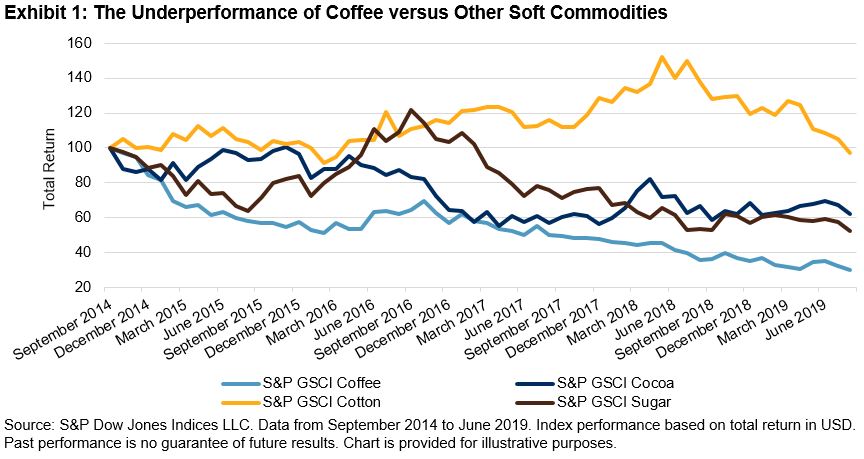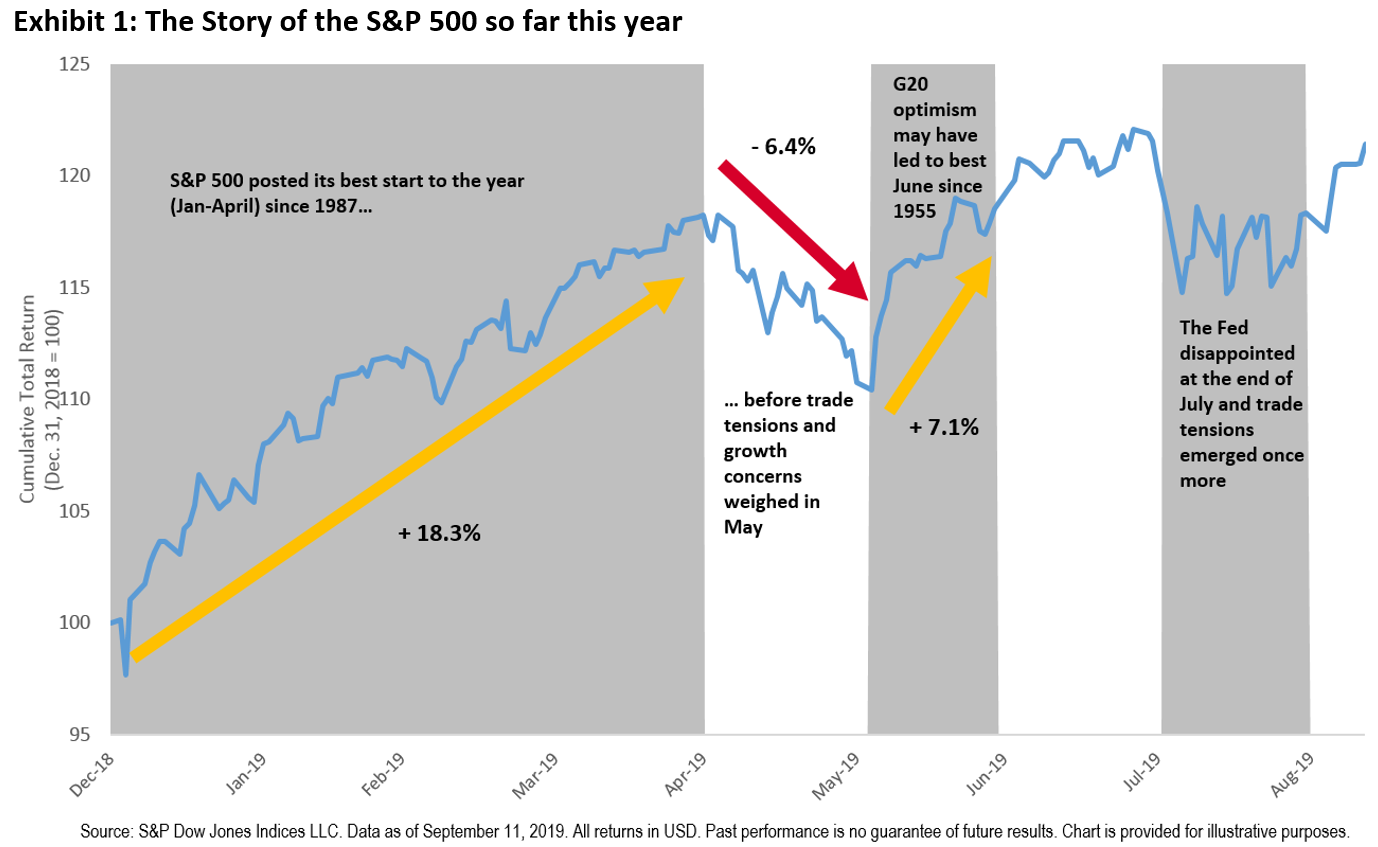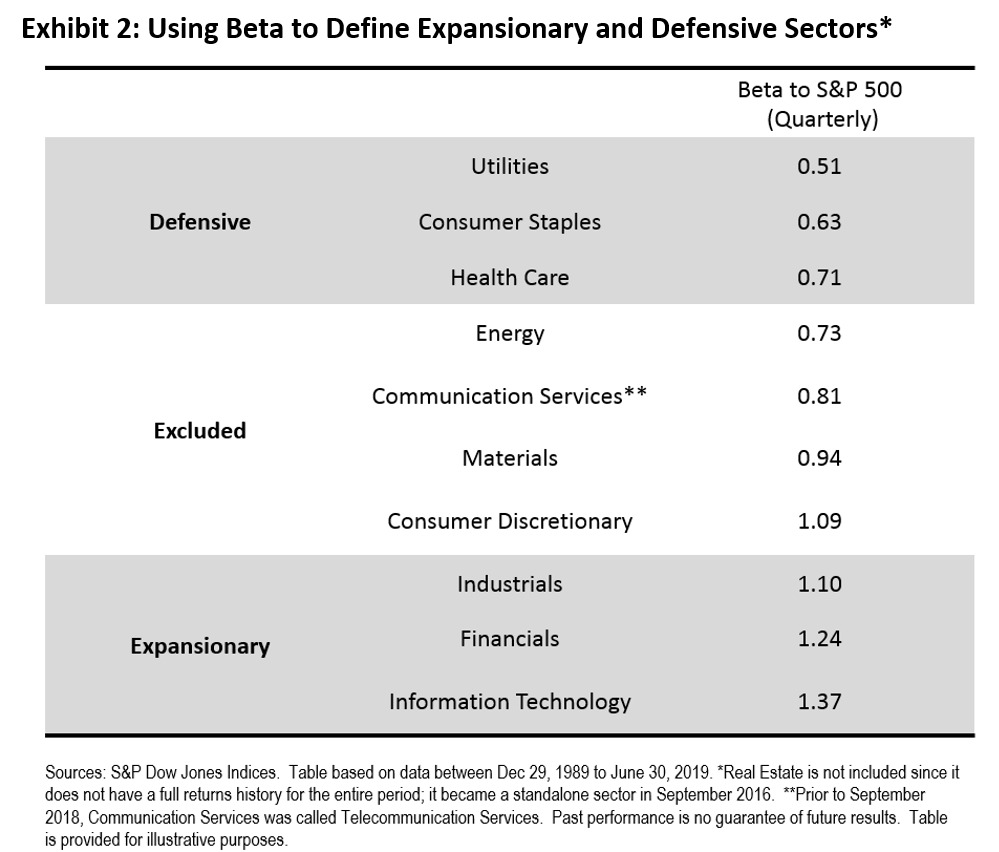From Dec. 31, 1999, to June 30, 2019, the S&P High Yield Dividend Aristocrats® generated a total return of 590.3%. Of the contribution, about 57% was from dividend income, while 43% came from price appreciation. In this blog, we will look at the risk/return characteristics in detail.
Favorable Risk-Adjusted Returns
The S&P High Yield Dividend Aristocrats delivered significant outperformance against its benchmark, the S&P Composite 1500®, over the long-term horizon. Rebasing both indices to 100 on Dec. 31, 1999, the S&P High Yield Dividend Aristocrats reached 690.30 on June 30, 2019, whereas the S&P Composite 1500 reached 315.15 over the same period, as shown in Exhibit 1.

Exhibit 2 shows the detailed risk/return profile of the S&P High Yield Dividend Aristocrats versus the S&P Composite 1500. Over the studied period, the S&P High Yield Dividend Aristocrats outperformed the S&P Composite 1500 by 4.3% on an annualized return basis. The reduced volatility helped the strategy deliver a much better risk-adjusted return (0.75) than the S&P Composite 1500 (0.41). Furthermore, the S&P High Yield Dividend Aristocrats also had superior risk-adjusted returns over the 5-, 10-, and 15-year periods.

Defensive Characteristics
The S&P High Yield Dividend Aristocrats demonstrated defensive features during the down markets of the studied period, with the strategy having a smaller maximum drawdown, less loss, and a lower beta than the S&P Composite 1500, as shown in Exhibit 3.

Upside Participation and Downside Protection
Another defensive feature of the S&P High Yield Dividend Aristocrats was that it participated in the upside when the market[1] was up and provided downside protection when the market was down. As illustrated in Exhibit 4, the S&P High Yield Dividend Aristocrats, on average, participated in 88.2% of market returns during the up months. On the other hand, it experienced only 59% of market drops during the down months. Overall, the strategy tended to outperform, with a persistent hit ratio[2] of 75.9% in down markets and 37.8% in up markets.

In the next blog, we will discuss the performance attributions of the S&P High Yield Dividend Aristocrats.
For more information, please see the first part of this blog series here.
[1] The market is defined as the monthly performance of the S&P Composite 1500 from Dec. 31, 1999, to June 30, 2019.
[2] The persistent hit ratio is defined as the total number of periods when the strategy outperforms the benchmark and is expressed as a percentage.
The posts on this blog are opinions, not advice. Please read our Disclaimers.










































 Exhibit 2 displays the stress scenario analysis for the S&P U.S. High Yield Low Volatility Corporate Bond Index since 2000. During the Q4 2018 and early January 2019 sell-off, when the broad market high yield bond index OAS widened by 199 bps from trough to peak, the S&P U.S. High Yield Low Volatility Corporate Bond Index outperformed the broad-based S&P U.S. High Yield Corporate Bond Index by 1.2%, while the latter suffered a loss of 4.1%. Other periods of market stress are also included that point to the defensive nature of the S&P U.S. High Yield Low Volatility Index.
Exhibit 2 displays the stress scenario analysis for the S&P U.S. High Yield Low Volatility Corporate Bond Index since 2000. During the Q4 2018 and early January 2019 sell-off, when the broad market high yield bond index OAS widened by 199 bps from trough to peak, the S&P U.S. High Yield Low Volatility Corporate Bond Index outperformed the broad-based S&P U.S. High Yield Corporate Bond Index by 1.2%, while the latter suffered a loss of 4.1%. Other periods of market stress are also included that point to the defensive nature of the S&P U.S. High Yield Low Volatility Index.










